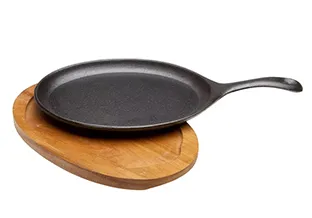
dutch oven dishwasher
Dutch Oven and Dishwasher A Perfect Culinary Combination
The Dutch oven, a versatile and timeless kitchen tool, has been a staple for home cooks and chefs alike for centuries. Known for its ability to retain heat and distribute it evenly, this cast-iron pot is perfect for a variety of cooking methods including braising, baking, frying, and stewing. However, once the cooking is done, the question arises can a Dutch oven go in the dishwasher?
The Durability of Dutch Ovens
Dutch ovens are usually made of cast iron, which provides excellent heat retention and distribution. Many modern versions are enamel-coated, making them resistant to rust and preventing food from sticking. This durability makes them a popular choice for slow-cooked meals and hearty stews. However, when it comes to cleaning them, especially after a heavy dish, some cooks may be tempted to throw them in the dishwasher for convenience.
Dishwasher Considerations
While it might seem appealing to toss your Dutch oven into the dishwasher after a long cooking session, experts generally advise against this practice, especially if your Dutch oven is made of cast iron. Traditional cast iron pots require special care to maintain their seasoning—an essential layer that prevents rust and enhances the flavor of your dishes. The high heat and harsh detergents in a dishwasher can strip away this seasoning, leading to a rougher cooking surface and a diminished cooking experience.
Enamel-coated Dutch ovens, on the other hand, are somewhat more forgiving. Many manufacturers state that their enamelware is dishwasher safe, but the truth is that even these pots can suffer. The dishwasher’s extreme heat can cause the enamel to chip over time, and harsh detergents can dull the surface, impacting both appearance and function.
Best Practices for Cleaning Dutch Ovens
dutch oven dishwasher

To ensure your Dutch oven remains in excellent condition, handwashing is usually the best approach. Here’s how to clean your Dutch oven effectively
1. Cool Down First Allow your pot to cool before attempting to clean it to avoid thermal shock, which can crack enameled versions.
2. Soak If food is stuck to the bottom, fill the pan with warm water and let it soak for about 30 minutes to loosen any residue.
3. Gentle Scrubbing Use a non-abrasive sponge or brush to gently scrub the interior. For stubborn stains, a paste made from baking soda and water can work wonders.
4. Rinse and Dry Rinse thoroughly with warm water and dry immediately to avoid any moisture accumulation, especially if your pot is made of raw cast iron.
5. Re-season if Necessary If you notice that the seasoning has worn off, apply a thin layer of vegetable oil to the interior surface and heat it up to restore its protective barrier.
Conclusion
The Dutch oven is a kitchen gem that can enhance your cooking experience, but maintaining it properly is crucial to ensure its longevity. While the convenience of a dishwasher is tempting, it’s usually best to stick to traditional handwashing techniques. By taking the time to care for your Dutch oven, you’ll preserve its performance and enjoy delicious meals for years to come. Whether you're simmering a savory stew or baking fresh bread, your loyal Dutch oven will undoubtedly be a cherished kitchen companion for any culinary adventure—and the handwashing isn't such a high price to pay for its remarkable contributions.
-
Season Cast Iron Perfectly with GPT-4 Turbo TipsNewsAug.01,2025
-
High Quality Cast Iron Cookware - Baixiang County Zhongda MachineryNewsAug.01,2025
-
Premium Cast Iron Pan: Durable & Perfect HeatNewsAug.01,2025
-
High Quality Kitchen Durable Black Round Cast Iron Cookware Pancake Crepe Pan-Baixiang County Zhongda Machinery Manufacturing Co., Ltd.NewsAug.01,2025
-
Cast Iron Cookware - Baixiang County Zhongda Machinery | Nonstick, Heat ResistanceNewsAug.01,2025
-
High Quality Kitchen Durable Black Round Cast Iron Cookware - Baixiang County Zhongda Machinery | Non-Stick, Heat Retention, DurableNewsJul.31,2025


